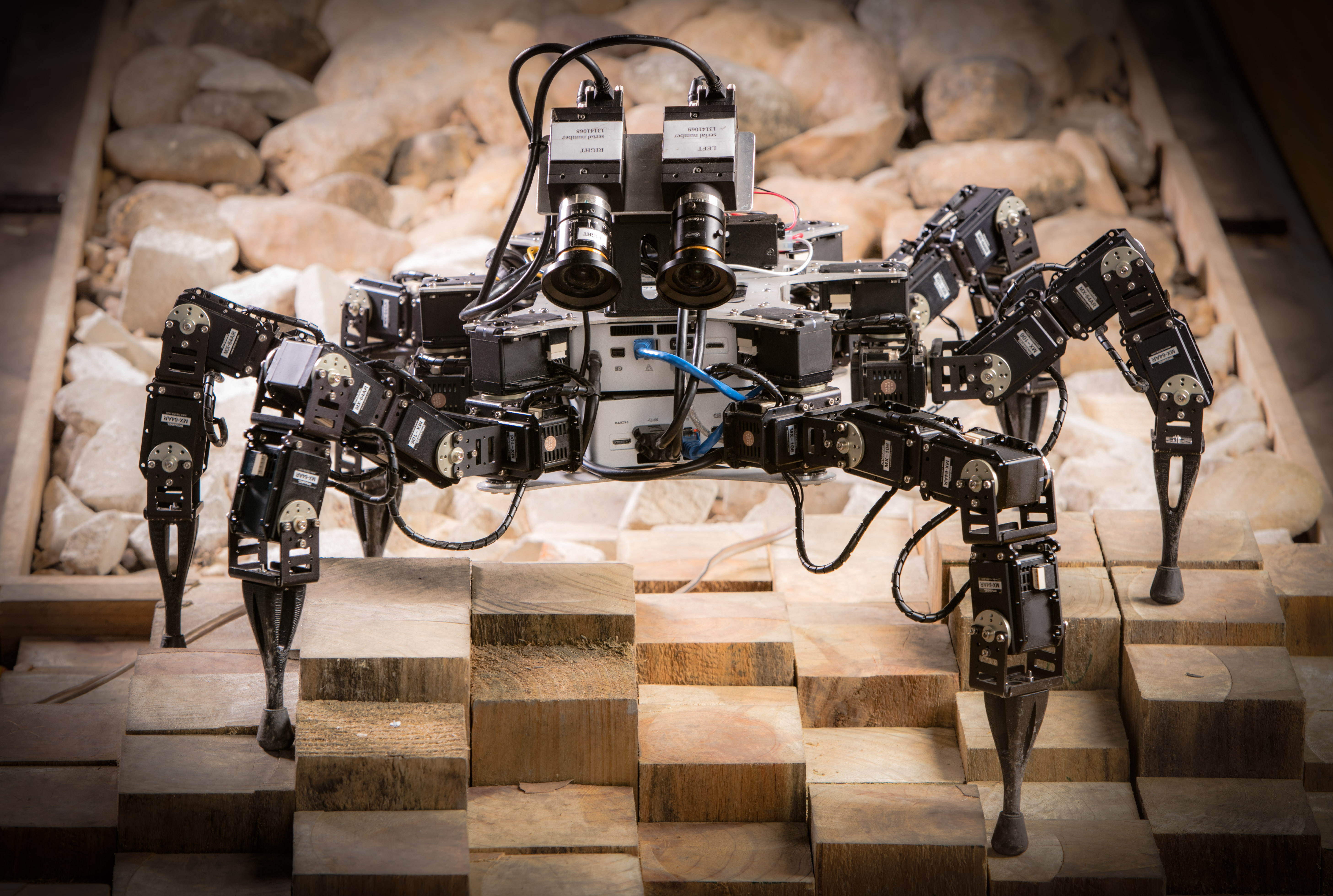Paper: Weaver Hexapod robot for autonomous navigation on unstructured terrain
Weaver: Hexapod robot for autonomous navigation on unstructured terrain
Legged robots are an efficient alternative for navigation in challenging terrain.
In this paper, we describe Weaver, a six legged robot that is designed to perform autonomous navigation in unstructured terrain. It uses stereo vision and pro- prioceptive sensing based terrain perception for adaptive control while using visual-inertial odometry for autonomous waypoint based navigation.
Terrain perception generates a minimal representation of the traversed environment in terms of roughness and step height. This reduces the complexity of the terrain model significantly, enabling the robot to feed back information about the environment into its controller.
Furthermore, we combine exteroceptive and proprioceptive sensing to enhance the terrain perception capabilities, especially in situations where the stereo camera is not able to generate an accurate representation of the environment.
The adaptation approach described in this article also exploits the unique properties of legged robots by adapting the virtual stiffness, stride frequency and stride height.
Weaver’s unique leg design with five joints per leg improves locomotion on high gradient slopes and this novel configuration is further analyzed. Using these approaches, we present an experimental evaluation of this fully self-contained hexapod performing autonomous navigation on a multi-terrain testbed and in outdoor terrain.

Weaver
